Over the past month, I have started several experimental projects including growing of plants in plastic bottles containing nutrient solution (aquaponics), seed propagation, cutting propagation, air layering and grafting. Some of these have been practiced over hundreds of years; however, I am trying out some new probably untried experiments such as grafting persimmon (fruit) on to a flowering plant stock, growing tropical plants such as sapota and white pumpking (seeds from India), cuttings placed in plastic bottles containing some water until signs of roots appear and then placing them in soil, and so on.
In brief, here they are:
1. Aquaponics

Simple aquaponics tools
The most important component is obviously the nutrient solution in which the plant has to grow. I selected a two part Hyponica pack (A, B) that I mixed in a 500-ml distilled water solution (1 ml of A and 1 ml of B), which I used to immerse the cleaned roots of plants such as tomato, mint and perilla plants. The growth after a few weeks seem to be OK, but not as fast as in soil. I will probably increase the frequency of replenishing the solution to about 3 times a week.
For the container, I cut transversely a 2-liter green-tea plastic container and inverted the top half on to the bottom half. If the cut is at the right location, there is no need to tape or hold the upper half in place – it fits snugly on to the bottom half.
I have placed the containers in a shaded but brightly lit balcony.
I also plant to support the plants from the top (by tying them to hooks on the ceiling). Presently, the roots are dipping in the solution supported by branches that rest on the edges of the plastic bottles.

Two tomato plants in nutrient solution
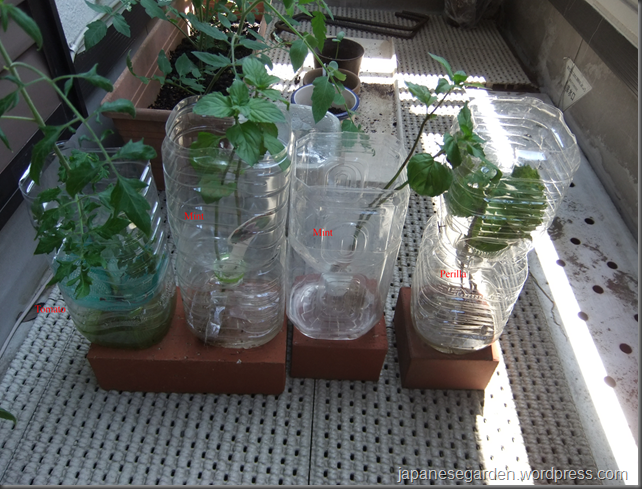
Two mint plants flanked by tomato and perilla

2. Air layering
Rose of Sharon
I decided to propagate Rose of Sharon by air layering. I cut off the bark gently and on the exposed portion, wound around moist sphagnum moss, wrapped it over with plastic and tied it with plastic wire. I have no idea whether this will work; but its fun trying it out. Will report results next month.

Air layering – Peach
The peach tree has not been giving flowers so I decided to propagate it by air layering and then pay more attention to raising the new plant (hopefully!) Again, will post results next month.

3. Grafting
Persimmon on flowering tree – far-fetched?
I have taken a step into the unknown world – I had a Japanese flowering tree giving small white flowers with more leaves than flowers; I cut off the upper part, cut a notch into the center of the stem and inserted a wedged persimmon cutting and wound it up with some moist sphagnum moss to retain moisture. Let’s see what happens after a month.

4. Propagation by cutting – 2 kinds of oranges
My friend Utiyama-san gave me some cuttings for two kinds of oranges which I promptly inserted into seed mix and covered up with a transparent plastic bag. Look forward to root germination in at least some of these.

5. Pineapple top
Carefully cut off the top of a ripe pineapple, removed the basal leaves to expose roots, and planted the top into potting mix. I am hoping that the outer leaves will fall off new leaves will emanate from the center and bring up a new pineapple plant.
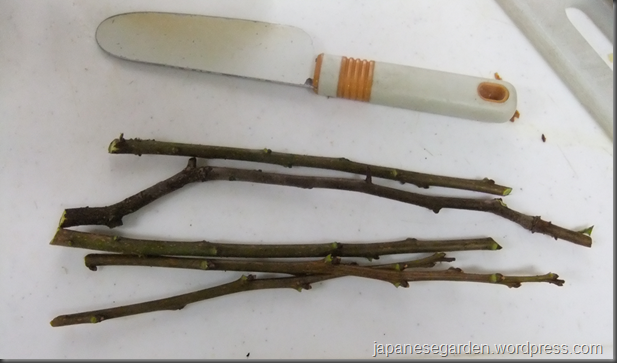
6. Propagation by cuttings after soaking them in water
Fig cuttings – some with buds
Took some fig cuttings from the tree in my garden and placed them in a 2-liter transparent plastic bottle for about 3 days when white dots appeared around the nodes – see the photo below.

Fig cutting after three days with bottom end immersed in water
I put these cuttings into potting mix and will keep them for about a month or so. Will post results next month.

Persimmon and pawpaw cuttings
Similar to fig cuttings, I also have pear, persimmon and pawpaw cuttings in bottle since mid July in plastic bottles. Not sure about persimmon but I hope to root pawpaw and pear cuttings.

7. Growing from seeds
Mexican mango seed extracted
I couldn’t resist getting the seed out of a Mexican mango that I ate. Split the har shell and got out the inner seed; removed the black thin covering and disconnected the umbilical. Planted the entire seed in compost+ light soil and covered it with transparent plastic to retain moisture. See photo below.

Mango seed in compost + light soil

Labeled, covered and stored in shaded location
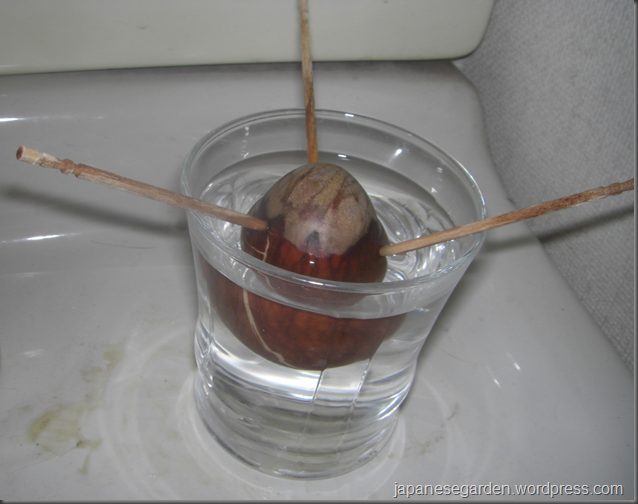
Avocado seed in water
This time I’m patiently going to wait until the avacado seed splits and throws out a root and leaves! I change the water every day after sticking toothpicks as above. After about 20 days, there seem to be results!

Avacado seed after twenty days
The root seems to be developing within and soon it should come out of the bottom. I wonder how the leaves will open out.

California lemon
After consuming a large yellow California lemon, I planted the seeds and the lemon saplings seem to be growing. I have no idea whether it will grow to be a good lemon tree and give lemons – but I plan to use it as bonsai and as rootstock for grafting from lemon/orange trees.

Sapota saplings from seeds
The Sapota seeds I brought over from India have finally germinated – planted them around second week of May but the seeds germinated only around July first week. Shows that every seed takes its own time!
I have about 5 to 6 Sapota saplings and will be happy even if two survive and grow well.

Cutting propagation box
Since July/August is the right season for propagating cuttings, I bought a transparent plastic box and filled with with a mix of vermiculite/akadama soil/peat moss and planted a bunch of cuttings in the moist mixture. The box has a nice air-tight lid and I remove the lid and spray some water on the soil to keep it moist and air the cuttings.

Collecting Zinnia seeds
When the Zinnia flower dries out, you can remove the petals and find arrow-head shaped seeds at the core. Every marigold flower gives nearly a hundred seeds. I’m planning to have lots of marigolds and zinnia in my garden next year!
In parallel with the experiments, I have been collecting seeds especially of Zinnia, marigold, water melon, beans for the next year. I have placed this seeds in paper packets and labelled them; I put these packets in a plastic box and placed them in the refrigerator.

Daily harvest
Meanwhile, my small harvest everyday continues; a typical harvest is like the above. Sometimes, there are more tomatoes and green pepper than cucumber and eggplants. I have also harvested beans, malkheiya, small radish, okra and corn from my office garden. The edamame however, were a failure. I think the plants or the soil properties were unfavorable. The edamame plants never grew to a bush – maybe I should have used more organic fertilizer.
July has been a fairly busy month with growing/propagating/experimenting. August promises to be better, as the results of the experiments should be out.
Have a great day!











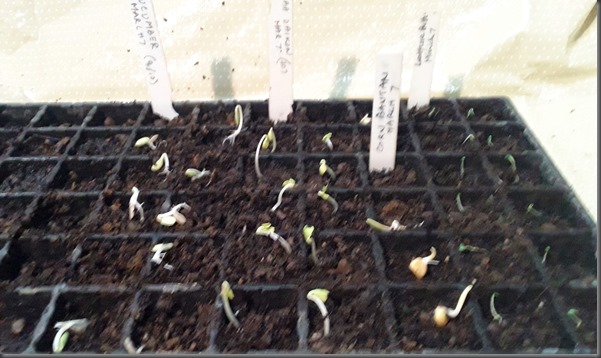



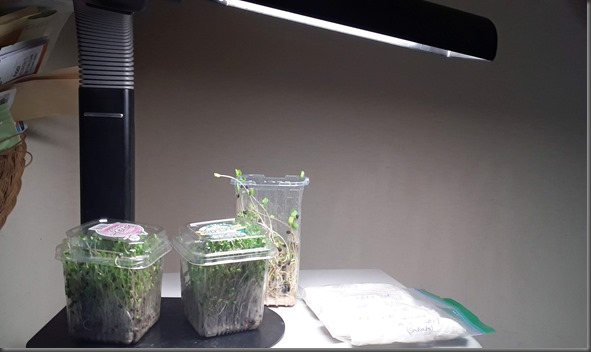
































































































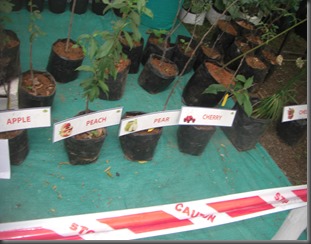


















Read 5 recent comments